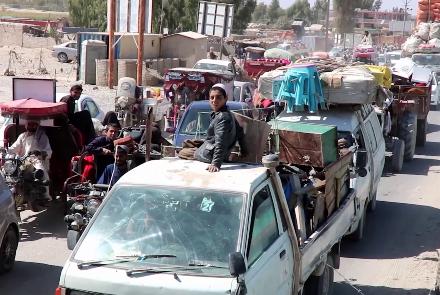The International Committee of the Red Cross (ICRC) on Wednesday said that Afghanistan remains the deadliest country for civilians, with the Afghan women and children make up half of the fatalities.
Robert Mardini, Director General of the ICRC who is currently visiting Afghanistan said that the escalation of violence in Afghanistan in recent months has worsened the humanitarian situation in the country, adding that hundreds of injuries among them, many civilians have been admitted to hospitals in Kandahar, Helmand and Ghazni provinces.
Mardini also met the Taliban officials in Andar district of Ghazni province.
“Even as peace talks are taking place, it is clear that there has been an intensification of hostilities in Afghanistan in recent weeks with a result in increase in the number of weapon wounded being admitted to hospitals,” he said. “According to hospital staffs, in areas in both sides of the conflict, for example in Helmand, Kandahar or Ghazni provinces, hundreds of casualties were admitted last month including significant numbers of civilians.”
He called on both sides of the Afghan conflict to do their best to safeguard civilians from harm.
“We really encourage the parties to the conflict to reach a practical agreement on specific issues that would help to alleviate the suffering of all those affected,” said Mardini.
He said that the trip to Afghanistan provided a good opportunity to brief the donors in the upcoming Geneva Conference on Afghanistan about the needs of the Afghan people.
This comes two days after the US Special Inspector for Afghanistan Reconstruction (SIGAR) in a new report quoting the Resolute Support said 876 civilians were killed and 1,685 were wounded this from July 1 to September 30, 2020.
In line with the continued rise in violence, this quarter’s casualties increased by 43% compared to last quarter (April 1–June 30, 2020), the report says.
The report says that though casualties are typically high in the third quarter of any year, this quarter’s high figures are notable because they occurred during an ongoing peace process and despite Taliban commitments to reduce violence.
According to the report, RS attributed about 83% of this quarter’s civilian casualties to anti-government forces (40% to unknown insurgents, 38% to the Taliban, 3% to Islamic State-Khorasan [Daesh], and 2% to the Haqqani Network), roughly the same as last quarter’s breakdown.
Another 8% were attributed to pro-government forces (8% to ANDSF and no incidents attributed to Coalition forces), and about 8% to other or unknown forces, the report says.
According to ICRC officials, the continued level of violence is also hindering health workers to reach to those in need in different parts of the country.
Back in October, The UN mission to Afghanistan (UNAMA) in a report said that overall the civilian casualty figure for the first nine months of 2020 dropped by around 30 percent compared to the same period in 2019, but while the number of civilian casualties is lowest in the first nine months of any year since 2012, “the harm done to civilians remains inordinate and shocking.”
UNAMA documented that Anti-Government Elements (AGEs) remain responsible for the majority of civilian casualties (58 percent). Compared to the same period in 2019, the amount of civilian deaths attributed to AGEs remained at similar levels, although there was a decrease of 34 per cent in the total number of civilian casualties – killed and injured – attributed to AGEs, said the report.
The report said that the number of civilians killed attributed to the Taliban increased by six percent in the first nine months of 2020, adding that the overall number of civilian casualties – killed and injured – attributed to the Taliban dropped by 32 percent, mainly due to a reduction in the number of civilians injured by suicide attacks and ground engagements, though this was partially offset by an increased number of civilian casualties from targeted killings and illegal, indiscriminate pressure-plate improvised explosives devices (IEDs).
Attacks causing civilian casualties carried out by undetermined age increased. There were more incidents, especially in relation to the use of IEDs and targeted killings, in which UNAMA could not determine which anti-government group was responsible. This also corresponds with a decrease in the number of incidents for which the Taliban or Daesh claimed responsibility.


